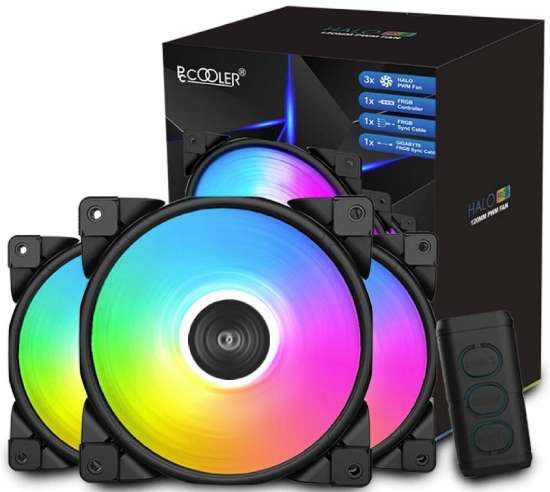120mm Fan VS 140mm The Complete Comparison Between Case Fans
You want to change look for your case fan then choose best one. It’s finally here: the 120mm fan vs 140mm fan comparison you’ve been looking for. We decided to compare the two fans, so you can enjoy the best at your feet without raising a strain.
We’ll highlight some of the best models available. Every PC needs to deserve of the greatest fans available. As a result, you may expect faster spinning rates, helping your PC to run more smoothly even while under severe load without overheating. Excessive heat can harm a computer or make it uncomfortable to sit next to one.
If you use your PC for gaming or other hard tasks, the best computer fan will help you get better results. There are numerous case fans available, each with its own price range, airflow, spin speed, and noise level. As a result, picking the proper product can be difficult. This article will put you in the proper direction.
Article Headings
The Best Comparison Battle Guide Of 120mm Fan VS 140mm
So, now is the time to check out each feature and see who the best PC fan is. In this 120mm fan VS 140mm fan comparison, we’ll show you which model wins in each category.
Let’s start with a vital comparison of two types of fans that are continuously challenging customers’ thoughts. We call attention to a battle between 120mm and 140mm fans. We’ll also list some of the best available options.
About 120mm Cooling Fans
The most generally available fans on the market are 120mm fans. Many larger fans have been developed, but this is the size that is still utilized in most laptop and computer setups today. This is due to the fact that a 120mm inflow fan may be used to cool the inside of cases for everyday computer use, and a strong 120mm fan is sufficient for many players.

While it misses some cooling possibilities, a 120mm mounting has a lower overall size than most other fans, making it preferable for low-profile cases and projects where other parts are smaller. The normal 120mm fan is 120mm x 120mm x 25mm, though some fans vary somewhat, particularly if they feature additional RGB lights.
About 140mm Cooling Fans
Considering its bigger size, 140mm fans are becoming increasingly popular. Players and professionals that utilize heavy applications, such as architects and editors, prefer the 140mm computer fan. There has been a lot of conversation regarding 140mm static pressure fans and their ranking.

Although this rating isn’t as important with 120mm fans, it’s worth noting because they appear to be all over the place. Because these fans are huge and have been known to overreach on the space intended for other fans, they should only be used in full cases.
The normal 140mm fan is 140mm x 140mm x 25mm, though some fans may vary somewhat, especially if they feature additional RGB lights. Because some 140mm fans contain a lot of extra illumination, they are larger and heavier.
Main Features Comparison
| Features | 120mm Fans | 140mm Fans |
| Size | They take less space and are light in weight | This fan is also heavier than the 120mm and have bigger size |
| Airflow | Low Air Flow | More Air Flow |
| Consumption Level | Low-power consumption level | High-power consumption level |
| Pressure | High Air Pressure | Less Air Pressure |
| Noise Level | Low Noise Level | High Noise Level |
| Speed | High fan speed | Less fan speed |
The following are the five detailed elements to consider while choosing between 120mm and 140mm fans:
Airflow
When it comes to the 120mm fans, they have a low rating. However, they normally do a good job of keeping the CPU cool. They promote appropriate air circulation, making them a good solution for combating heat-related issues. The finest thing is that the low CFM assures high static pressure. In the end, this feature makes it ideal for heavy-lifting duties.
The overall rating for the 140mm fans is now quite high. It improves airflow and reduces overheating quickly. In fact, the 140mm fans outperform the 120mm fans when it comes to heavier workloads.
As a result, the 140mm leads the 120mm in terms of superior airflow, owing to its higher exhaust pressure and good cooling potential.
Noise Level
The dBA of the 120mm fans is quite low. They run on little spins, which speeds up the rotation without creating a lot of noise. As a result, you won’t hear anything excessively loud, and there will be a few instances where the sound is nearly inaudible. The main feature is that the 120mm fans do not spin very fast, resulting in a low noise level.
The dBA level of the 140mm fans is quite high. However, there are just a few types that provide acceptable sound. However, at maximum RPM, the 140mm fans can be quite loud. The reason for this is that they have greater spins than the 120mm ones. This is really visible, especially when multitasking.
Size
The 120mm fans, for example, take up less space and are low. But if you install them in your system, there is still a sufficient space to work with. They have a good amount of room between the screw holes. The space between the slots allows for easy airflow, preventing heat from settling around the fans.
The spacing between the screw holes isn’t well suited for the 140mm fans. As a result, the airflow isn’t consistent, which means it’s no better than a 120mm fan in this situation. This fan is also heavier than the 120mm, and its larger size takes up more room.
Economical
When compared to 120mm fans, 140mm fans are more expensive. However, the difference isn’t significant. You might believe that a 140mm fan is expensive. However, the price tag is justifiable in light of the power it will provide to your system. For its slightly lower output level, 120mm is less expensive than 140mm. The 140mm fans are for all projects, whilst the 120mm fans are mostly for economical builds.
Spinning Capability
The RPM (revolutions per minute) of a CPU fan is an important metric to consider when selecting the proper fan for your system. When it comes to fans with 120mm and 140mm blades, there are a few key differences that determine which one spins faster. The 120mm fans spin at a rate of more than 1200 RPM, which speeds up the PC process. Such rapid functioning is essential for completing difficult tasks since it allows for quicker actions.
Fans usually produce enough noise to be audible at 900ish rpm, and the higher the rpm, the louder it becomes. You’ll understand if you’ve ever heard of an 8000rpm Delta server fan.
Last Case Fans Verdict
Finally, we’ll repeat our major point: the quality of the fan matters more than its size, whether it’s 120mm or 140mm. Cling to our top choices or other high-quality options, you’ll be well set for a well-cooled setup regardless of size. If you want our honest view, we believe that 140mm fans are superior to 120mm fans to some amount. When you have multiple slots, 140mm fans are always preferable to 120mm fans.
The reason is straightforward. Because the 140mm fans are huge, they spin slowly. They provide excellent cooling performance at a near-inaudible noise level. Above all, they move a significant amount of air at a low RPM.
When choosing between two 140mm and dual 120mm fans, 140mm fans are always the better option. The advantages of a 140mm fan always outweigh those of a 120mm fan. As a result, consider the benefits you’ll receive from each one when selecting which one is superior.
Frequently Asked Questions (FAQs)
Are 120mm and 140mm fans the same size?
Because the blades on most 140mm fans are longer, they have a greater CFM rating. Now, the blade length isn’t the only factor to consider when it comes to cooling. RPM stands for rounds per minute, which is the number of times the fan will spin around per minute. 120mm fans, on average, have a higher RPM than 140mm fans
Are case fans 120mm?
For many enthusiasts, 120mm fans are the best option. Though they aren’t the most powerful fans on the market, most cases are built to accommodate them. They’re frequently regarded as having the best price-to-performance ratio.
What is a good RPM for a case fan?
Fans usually produce enough noise to be audible at 900ish rpm, and the higher the rpm, the louder it becomes. You’ll understand if you’ve ever heard a 8000rpm Delta server fan.








